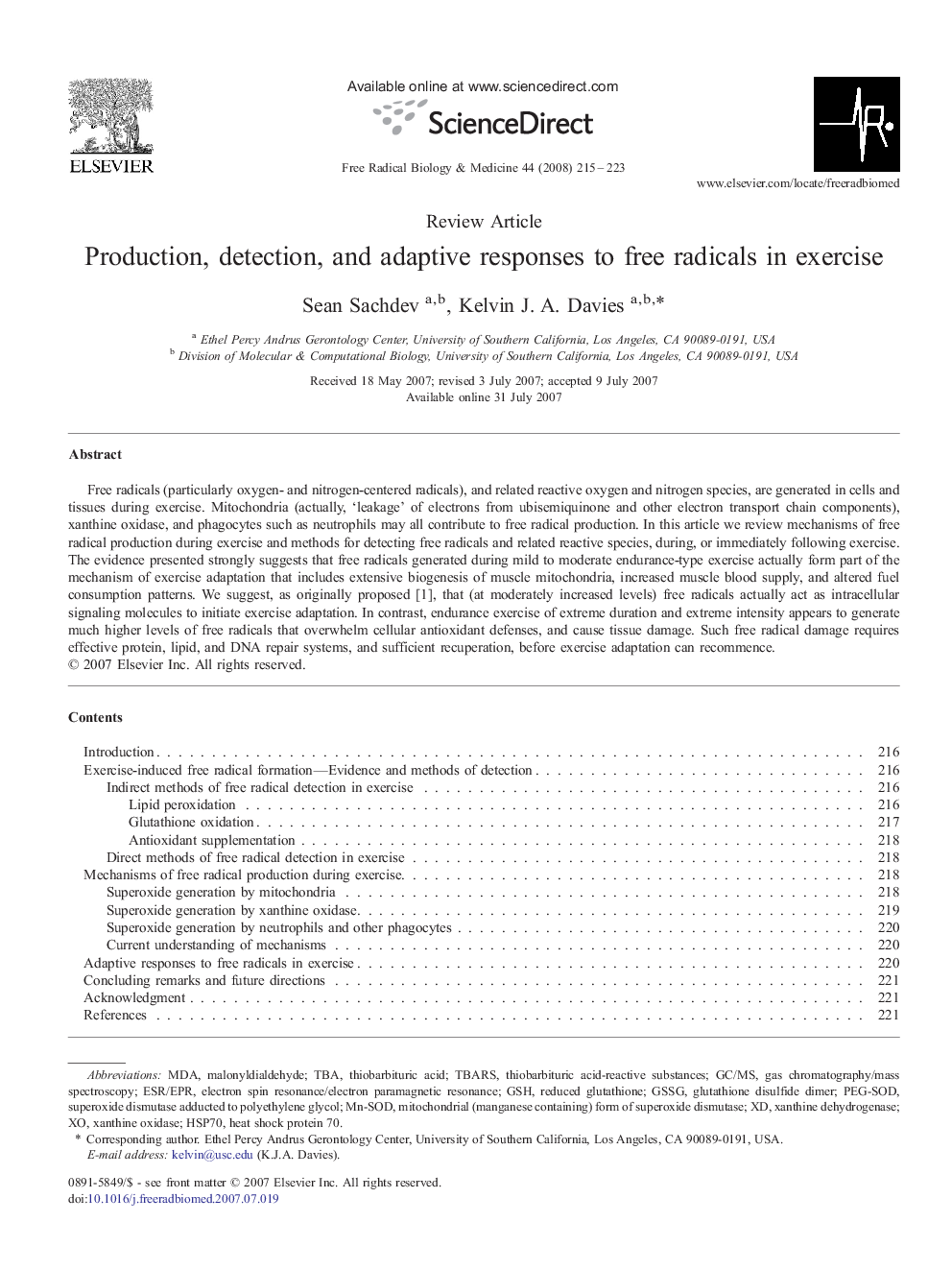| کد مقاله | کد نشریه | سال انتشار | مقاله انگلیسی | نسخه تمام متن |
|---|---|---|---|---|
| 1910349 | 1046766 | 2008 | 9 صفحه PDF | دانلود رایگان |

Free radicals (particularly oxygen- and nitrogen-centered radicals), and related reactive oxygen and nitrogen species, are generated in cells and tissues during exercise. Mitochondria (actually, ‘leakage’ of electrons from ubisemiquinone and other electron transport chain components), xanthine oxidase, and phagocytes such as neutrophils may all contribute to free radical production. In this article we review mechanisms of free radical production during exercise and methods for detecting free radicals and related reactive species, during, or immediately following exercise. The evidence presented strongly suggests that free radicals generated during mild to moderate endurance-type exercise actually form part of the mechanism of exercise adaptation that includes extensive biogenesis of muscle mitochondria, increased muscle blood supply, and altered fuel consumption patterns. We suggest, as originally proposed [1], that (at moderately increased levels) free radicals actually act as intracellular signaling molecules to initiate exercise adaptation. In contrast, endurance exercise of extreme duration and extreme intensity appears to generate much higher levels of free radicals that overwhelm cellular antioxidant defenses, and cause tissue damage. Such free radical damage requires effective protein, lipid, and DNA repair systems, and sufficient recuperation, before exercise adaptation can recommence.
Journal: Free Radical Biology and Medicine - Volume 44, Issue 2, 15 January 2008, Pages 215–223